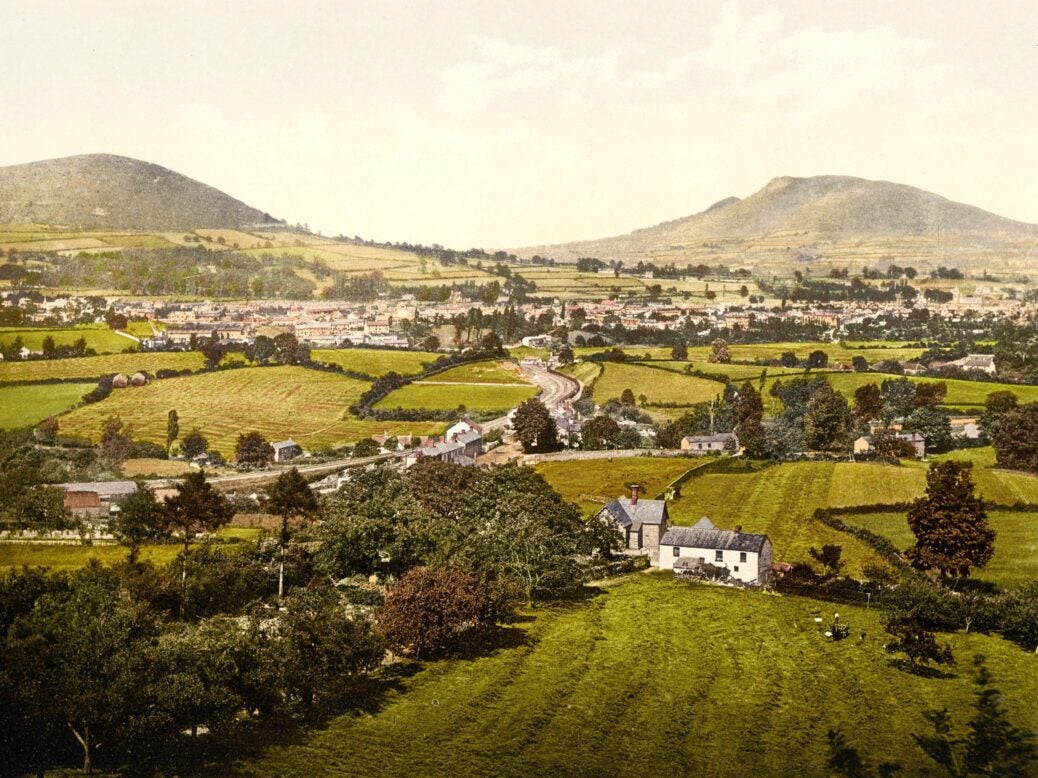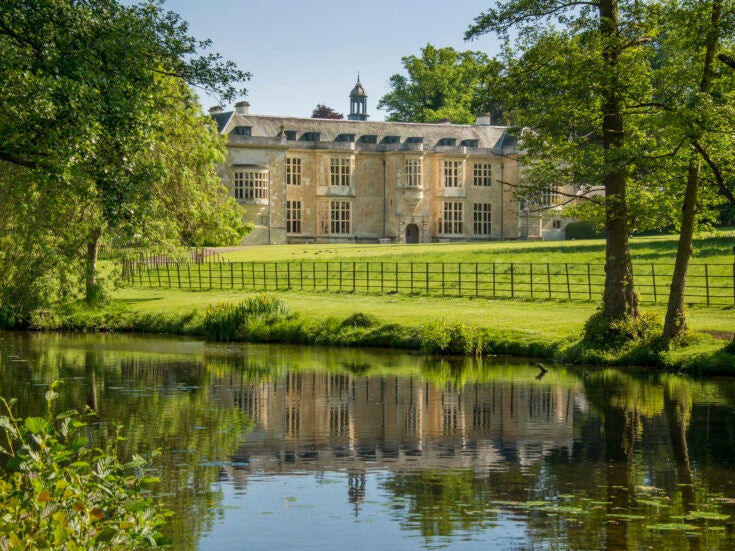
This understated but picturesque region is greener than Tuscany, but with a uniquely Welsh charm, writes Clive Aslet
Earlier this year, I persuaded the owner of Gliffaes, a hotel above the brawling River Usk, to take me on to the roof. Gliffaes began life as a gloriously dotty Tuscan villa, with a couple of towers, built by a clergyman. The towers, I was told, are too full of rooks’ nests to go up, but the view from the leads is enough. It’s a vision of heaven.
I’ve read that the name means either ‘abounding in fish’ or ‘dewy field,’ and there are plenty of dewy fields in this green-on green landscape, which rises to Table Mountain (outside Crickhowell, not Cape Town). Admittedly the river has fewer salmon, but that doesn’t stop fisherman from coming. So many ancient or unusual trees grow around the hotel that it publishes a guide to them.
Come to think of it, the Italianate architecture of the hotel isn’t so inappropriate. They call this part of the world Uskany. It’s a good coinage. It’s lusher than Tuscany, the sun is shier of coming out from behind the clouds, and they make – as yet – no wine. But beauty is there in spades, and for the owners of the private estates, like Llandover and Glanusk, life must be (one would like to think, not having the responsibilities of running them) idyllic. Crickhowell is a tiny town and yet has everything – several good pubs; the furniture shop Webbs, said to be the Harrods of the Welsh Marches; even a bookshop. When we returned to Uskany recently, we stayed in a B&B that was made out of an old barn but was bright with fabrics, family paintings and paint colours. Fabulous.
Let’s not make too much of it. Only a few miles away, to the south, is the post-industrial grimness of the Welsh Valleys: little douceur de vivre on show there. But, well, we were on holiday, and this place has been regarded as famously picturesque since William Gilpin (another clergyman) praised it in the 18th century. When the Napoleonic Wars prevented travellers from making a Grand Tour, they thrilled to this scenery instead. Wordsworth came, Turner came. So in 1924 did Eric Gill, sculptor, letter carver and leader of a quasimonastic community of artists at Capel-y Finn. Gill was a strange man who had sex with everything, but fortunately the Black Mountains were remote.
Now it’s chefs who are coming. Chris Harrod arrived at Whitebrook, six miles south of Monmouth, four years ago, after working with Raymond Blanc at Le Manoir aux Quat’ Saisons in Oxfordshire. Within a year, he’d won a Michelin star. His food couldn’t be more indigenous to the area; some of it grows wild. Ceps and St George’s mushroom are foraged from the back garden. The tiny pink caps of the scallop mushroom accompanying my starter were gathered beside the waterfall. Meadowsweet, mugwort, pennyroyal – the menu reads like Shakespearean herbal. ‘Every time I go for a run, I have to stop and look at the ground,’ he says. Dessert was dressed with a crumbled green substance, sweet and citrus-tasting, quite unidentifiable to me; it was made from a syrup of pine needles, which had been frozen, then blitzed in a blender. (Warning: use only needles of the Mediterranean pine. The ordinary ones smell like Harpic.)
I used to think that Presteigne, an hour due north from where we were staying, was the most perfect of small towns. It straddles the River Lugg, which at that point divides Wales from England. I once went to a good party there, but it didn’t seem the same this time. Our 24-year-old son entered one of the pubs wearing a tweed jacket: hoots of derision from the assembled locals (who had clearly been assembled for some time) for being poncily dressed. I stopped at an antique shop which displayed a small plate marked ‘William’ and a slipware dish bearing the name of our second son, John. I was going to ask if they had a third for our youngest, Charlie, until discovering the prices – £350 for the slipware dish. Good grief. It’s Crickhowell for me.
Photo credit: Detroit Publishing Co @Wikimedia Commons
Related…
Clive Aslet: What Modern architects have in common with Classicists
Clive Aslet on the unlikely return of the folly: ‘Couldn’t somebody design one to Brexit?’
Low local distilleries are boosting communities – Clive Aslet






